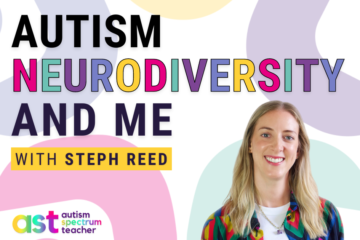Table of Contents
Communication and Autism
Every autistic child will have varying abilities with language and communication. If you know more than one autistic child, you will know that their communication and language abilities will be very different!
It is important to understand the difference between expressive and receptive communication skills, because all autistic children will have some degree of challenge or delay in one or both of these areas:
Expressive communication: using language and verbal or non-verbal communication to convey a message.
Receptive language: understanding words, language and communication as a receiver of a communicative message.
Furthermore, research suggests that autistic children may also have challenges related to:
Joint attention: the ability to co-ordinate attention between people and objects
Symbol use: learning and understanding conventional or shared meanings for symbols (a symbol being anything that conveys a meaning, for example; a sound, a gesture or a word)

It is important to actively be aware and think about these four areas when communicating with a child. Questions you could ask yourself when communicating/ teaching are:
Taking these areas into consideration, your use of language is very important: Be clear in your use of language



2 Comments
Colleen Jardine · September 21, 2021 at 1:13 pm
Hi Steph, my name’s Colleen Jardine. I gained a load of knowledge from your post that will be extremely beneficial in dealing with the autistic students that I have in my Grade 2 class. However, the problem that I am faced with is that there are no strategies in place to accommodate their learning needs. These children are placed into mainstream classes with up to 35 students in a class and then basically forgotten about. Two main reasons firstly, because of social pressure parents do not accept that their children have learning difficulties, and secondly, teachers are possibly not skilled in dealing with learning disabilities or have the time to support these students learning needs. Autism spectrum disorder (ASD) includes a range of medical conditions but how do teachers maximize learning outcomes for these students went there is no solid information available nor parental assistance and participation? They are Grade 2 students so there is still time to intervene, however, I am unsure of how to approach school management? How would you go about approach school management to set up a conducive learning environment for these students?
Steph Reed · October 27, 2021 at 11:49 am
Hi Colleen, I would implement as much as you can be yourself. Show management evidence of why these strategies really help (i.e. blog posts, books, research – this will help to show the reasons why and importantly – the impact on children’s outcomes. Good luck.
Comments are closed.